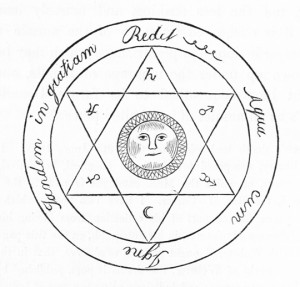England’s biggest peacetime witch trial: The Trial of The Lancashire Witches
It was England’s biggest peacetime witch trial: The Trial of The Lancashire Witches. And it was brutal…
Does it have relevance today?

Illustration from James Crossley’s introduction to Pott’s Discovery of witches in the County of Lancaster (1845) reprinted from the original edition of 1613.
The Lancashire Witches 1612-2012 (The Public Domain Review)
Not long after ten Lancashire residents were found guilty of witchcraft and hung in August 1612, the official proceedings of the trial were published by the clerk of the court Thomas Potts in his The Wonderfull Discoverie of Witches in the Countie of Lancaster. Four hundred years on, Robert Poole reflects on England’s biggest witch trial and how it still has relevance today.
Four hundred years ago, in 1612, the north-west of England was the scene of England’s biggest peacetime witch trial: the trial of the Lancashire witches. Twenty people, mostly from the Pendle area of Lancashire, were imprisoned in the castle as witches. Ten were hanged, one died in gaol, one was sentenced to stand in the pillory, and eight were acquitted. The 2012 anniversary sees a small flood of commemorative events, including works of fiction by Blake Morrison, Carol Ann Duffy and Jeanette Winterson. How did this witch trial come about, and what accounts for its enduring fame?
We know so much about the Lancashire Witches because the trial was recorded in unique detail by the clerk of the court, Thomas Potts, who published his account soon afterwards as The Wonderful Discovery of Witches in the County of Lancaster…
See the rest here.
Share
